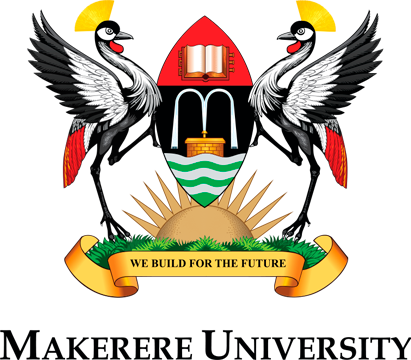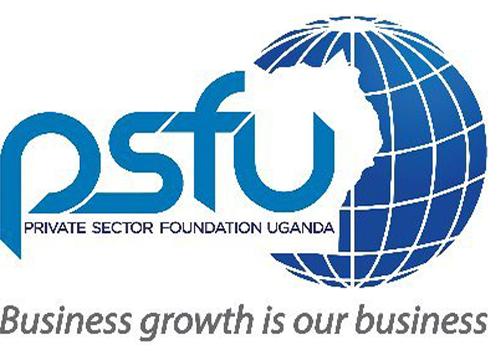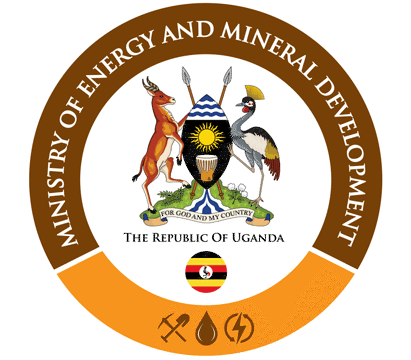BLOG: Key Reflections from IMEU Results Based Financing Interventions in Uganda
June 18, 2024 Results-based management

Today, the Results-based Financing (RBF) model is increasingly being adopted by donors, support agencies, and local governments, especially in the off-grid energy sector. The World Bank highlights several factors driving the recent intensification of this model in development spending. These include sustained budgetary pressures, dissatisfaction with business practices, and an increased focus on achieving measurable results, particularly in the context of meeting the Sustainable Development Goals (SDGs). To address these concerns, the RBF approach employs a performance-based funding mechanism where the donor releases funds to a recipient only upon achieving a pre-agreed set of results.
In Uganda, the RBF is considered a valuable instrument for universal energy access to the last-mile underserved markets with significant investments in several projects like the Uganda Rural Electricity Access Project (UREAP), Global Alliance for Clean Cookstoves (GACC) Initiatives, Renewable Energy for Refugees (RE4R), and Energy Efficient Stove Promotion (EESP) Program, the Result-Based Facility (RBF) under the Uganda Energy Credit Capitalisation Company (UECCC), GIZ/ENDEV, and the Beyond the Grid Fund for Africa (BGFA). These are examples where the RBF facilities are mainly designed and implemented to de-risk commercial investment and incentivize the participation of companies that offer solutions in markets that are difficult to reach.
One critical feature of RBF is that payment is made only upon delivery, with financing contingent on the verification of sales. This means that the companies receiving financial incentives are expected to take full responsibility for the risks until the desired sales results are achieved. In the energy sector, RBF payments are only made after successfully verifying products from participating companies. This makes RBF less distortionary in the market than other incentive programs and produces better results at a lower expected cost. RBF leverages private sector investment and enhances financial management and impact.
To contribute to existing access to finance initiatives in the energy sector, the Embassy of Sweden in Uganda funded a four-year (2021-2025) project, the “Inclusive Markets for Energy Efficiency in Uganda (IMEU) project” (IMEU), whose overall goal is “To increase the development and adoption of energy-efficient (EE) products and services in agriculture and built environments to enhance livelihoods and increase resilience and competitiveness of businesses in Uganda.” The specific objectives of IMEU are (1) increasing awareness among energy users (demand side) to encourage the use of energy-efficient products and services, (2) providing targeted and contextualized de-risking support to small and medium enterprises (SMEs), energy service companies (ESCOs), and Energy Service Provider Companies (ESPC) (supply side), and (3) strengthening institutional coordination, research, and the enabling environment for energy efficiency.
To achieve its second objective, the project has a contractual arrangement with 13 energy service companies, ESCOs/ESPCs, through results-based financing incentives to promote their energy-efficient products in the last-mile markets of the southern, northern, and central regions. However, these companies face challenges and need help reaching their target customers. To date, they have sold 8,377 units (directly 72 businesses, 67 social institutions of EE products, 8,238 households), where about 45,000 people have directly accessed a range of energy efficiency (EE) products and services out of the 150,000 expected to benefit during the project's life.
During implementation, three RBF grantees' contracts were reviewed, and their sales targets were based on their capacity. other low-performing grantees' contracts are subject to review. Therefore, similar to other projects, the IMEU-supported grantees have encountered various challenges, such as a lack of working capital, end users' financing, and poor distribution channels, while extending their sales in the targeted markets. The project has provided solutions to address these challenges and critical success factors, as illustrated, and some key learnings are documented below.
1. Pre-financing /Access to Finance/Availability of Working Capital
IMEU project experience shows that at least 7 of the 13 companies struggled with raising working capital besides the high cost of delivering products to the last-mile user. Based on the IMEU baseline study conducted in April 2022, close to 5 in 10 companies cited an inability to raise capital as one of their challenges. Energising Development (EnDev), another key actor that has implemented RBF mechanisms, also noted that access to finance remains one of the key barriers faced by companies and consumers in nascent energy access markets. Generally, access to finance is a crucial concern for companies implementing Results-Based Financing (RBF) because they need to fund all their interventions upfront until they receive the RBF incentives. Therefore, companies need to secure pre-financing or working capital. In Uganda’s energy sector, 65% of renewable energy companies in Kampala and 85% of those in upcountry areas are not aware of the funding opportunities available. If a company does not have access to finance yet, it is necessary to bring in or set up complementary loan facilities from national financial institutions. This gap can be bridged through development banks or other donor-financed programs.
Under the IMEU project, the Private Sector Foundation Uganda (PSFU), one of the project consortium partners, conducted a Financial Institutions (FIs) mapping. The project itself conducted several matchmaking events and facilitated one-to-one connections with the banks and FIs on the ground and supported with the best practices (illustrative) innovative financing model. As a result, some RBF grantees are mobilizing private financing/equity financing. The project continuously provides investment readiness technical assistance (TA) support to the grantees to help scale up their growth beyond the project.
In addition, the project has learned that to make the RBF intervention successful, various strategies, technical assistance, credit enhancement, risk mitigation tools, equity-like instruments, and innovative mechanisms must be deployed to increase the lending capacity of banks and financial institutions; those relevant were not well incorporated in the initial project design.
2. End Users Financing /SMART Subsidy
When implementing Results-Based Financing (RBF), companies must consider the affordable financing options available to their end-users. Clients require flexible and innovative financing solutions to afford the products. Complementary loan facilities from cooperatives, local banks, development finance institutions, or government/incentive subsidy programs are crucial to address this need.
Out of 13, 7 RBF companies under IMEU collaborate with local SACCOs to mobilize financing support for their consumers, organize community groups, and develop financing from other partners. Some grantees, like Eco Group, sell through Watoto Church. Still, the need for end users’ financing remains unaddressed; the company must develop more robust FI linkages for their needy users, especially last-mile buyers. Therefore, the IMEU project, together with the PSFU, is consistently providing technical assistance to the RBF grantees with a focus on regulatory support and is the main driving force behind overcoming the challenges of low affordability, limitations on downstream working capital, and regulatory barriers. The project also actively participates in local network and global discussions, such as GOGLA’s End User Subsidy Lab, and adopts the best practices for the end user’s financing model with the RBF sales model.
3. Market Change/Market Dynamics
The project has also learned that companies that are in their early stages are at a high risk of exposure if their market interventions fail to align with market changes. This is particularly true for local stove manufacturing companies like Uganda's Uga Stove, Eco Stove, and Bold Energy. With the rapid rise in demand for new technologies such as electric pressure cookers (EPC) and induction stoves in the urban markets, these companies are heavily impacted due to their inability to keep up with technological advancements.
However, it has been observed that cross-cutting market-building instruments and the innovation and diversification of energy-efficient (EE) products offer better business opportunities. For instance, Eco Stove and AKVO International are following this strategy and have seen an increase in their market uptake in the last-mile markets.
4. Independent Verification Agency (IVA) Challenges
Based on experiences from the Global EnDev RBF program intervention, companies and support agencies often face challenges in tracking, validating, disbursing, and reporting. These challenges may result in higher data collection and auditing costs, especially for independent and complex verification of results. Learning from these proven global practices, the IMEU project team is in regular contact with the IVA and is adapting the reporting requirements and the simplified IVA parameters. Recently, the project added a bulk sales model allowing companies to sell at the wholesale and retail levels, which was not explicitly envisioned in the initial design.
5. The Setting of Incentives is Not Product-Specific (e.g., Smaller Products Like Locally Manufactured Cooking Stoves)
Based on the lessons learned from GIZ/EnDev and SNV RBF program practices in other countries like Cambodia and Mozambique, RBF mechanisms are unsuitable for smaller products sold for cash in high volumes, such as small lighting devices. Collecting customer data is prohibitive for over-the-counter products. Local stove manufacturing companies especially encounter this challenge. The project reviewed this and tried to support companies such as Uganda Stove Manufacturer and Bold Energy Limited in innovative sales strategies, such as bulk sales/mass selling and B2B sales contact for IVA verification. The project has readjusted the product range and market prices and realigned the incentives. In some cases, the project also discontinues the RBF contractual obligation with non-performing companies. This learning and adaptive management process will continue over the project period, and more lessons will be documented in the coming days.
6. Early-Stage Companies
For most RBF interventions under IMEU, RBF incentives are paid only after the service has been delivered, which may not be suitable for companies at an earlier stage. Most IMEU-supported RBF grantees are early-stage companies struggling to get their working capital per investment. It was also noticed that the EE/RE industry faces several challenges, including a lack of access to consumer finance, low levels of consumer awareness, competition from cheaper alternatives, and low demand due to poor market structures.
7. Capacity of the Companies /Need of TA Support
Based on the EnDev global initiatives on RBF intervention, the local SMEs/companies face challenges meeting the stringent eligibility criteria for RBF. Additionally, the complexity of RBF can pose a problem for companies, and therefore, they need to be designed to be as simple as possible to ensure their success.
The IMEU project provided support, including co-creating the intervention, due diligence, boot camp, one-to-one support via regular field trips, and other training/workshops. Similarly, PSFU provided various PSD-related support and linkages/training tool kit designs, market assessments, and business advisory and capacity building for various ecosystem stakeholders in the EE space.
Similarly, the IMEU project provides external TA support, such as Marketing Strategies, Business Development Services (BDS) consultants, and investment readiness. Similar projects also extensively supported e-waste management, energy audits, Good Governance and Gender Equality and Social Inclusion (GESI) integration action planning training.
8. Regular Feedback Mechanism
Based on the one-to-one meetings with the RBF grantees and their feedback, extensive field visits, and checking the market reality on EE products and services, the IMEU project has established regular feedback loop mechanisms with companies and received regular updates on the market uptake of their products and their challenges. To address the companies' key challenges, the project becomes flexible and adaptable to address their business needs. In doing so, the IMEU project team regularly communicates with RBF Grantees regarding the IVA process and conducts site visits. They provide this feedback to the IVA to develop flexible reporting and IVA requirements. The project team is providing this feedback to the IVA and creating a possible reporting and IVA requirement. As mentioned above, the project also allowed companies to report their bulk sales, which the initial RBF reporting systems did not consider.
9. Enabling Environment on Energy Efficiency Market Development
Improving the enabling environment is key to creating markets for EE products and services in the last-mile markets. RBF programs cannot tackle this challenging market alone. Other government policies, regulatory support, and financial incentives are needed to make products affordable and accessible to last-mile consumers.
From the current learning, the higher-tier products such as EPCs and advanced Biomass Stoves benefit the rich due to the relatively high costs for the rural low-income people. To reach the last mile, EE products, regulations and incentive provisions are still poorly aligned. Therefore, the IMEU project and the Energy Efficiency Accelerators Network (EEAN) infrastructure within the Ministry of Energy and Mineral Development (MEMD) could advocate the design of EE services with the last mile in mind.
Besides the EEAN-established efforts, the IMEU project has implemented policy and behavioural change (BC) related interventions, including market awareness initiatives, exhibitions, and thematic discussions through the recently established EEAN under the MEMD. The project also supported the drafting of Energy Efficiency and Conservation (EEC) bills. To make such an RBF program successful, a high-level portfolio of non-distortionary financing and technical assistance interventions for country EE segments from the Ministry is needed.
Conclusion
Throughout the project period, we will continue to learn about RBF intervention and add additional lessons based on the ongoing IMEU and global lessons learned from other RBF projects mentioned in this reflection. To ensure the success of RBF, it is important to consider various aspects such as the delivery capacity of the ESPCs, market perception of the EE products and services, access to finance for end users, policy environment and available incentives in the market, market dynamics, and technological innovation. We have also learned that to make the RBF intervention successful, various strategies, technical assistance, credit enhancement, risk mitigation tools, equity-like instruments, and innovative mechanisms must be deployed to increase the lending capacity of banks and financial institutions. Understanding how best to adapt to these factors while implementing RBF initiatives is important.
By Ekanath Khatiwada, Private Sector Development Advisor, IMEU/SNV Uganda
Sources:
- IMEU Annual Progress Report 2023 and Mid-Year Report 2024
- Energypedia: Results-Based Financing
- "A Guide for Effective Results-Based Financing Strategies," GOGLA/World Bank
- "Transforming Energy Access Markets with Results-Based Financing: Lessons from 7 Years of Implementation under EnDev’s RBF Facility Financed by UK Aid."
- Next Billion: Results-Based Financing Off-Grid Energy Localization Investment
- "Unlocking Off-Grid Solar: How Results-Based Financing is Driving Energy Access and Powering Productivity," Published by GOGLA





